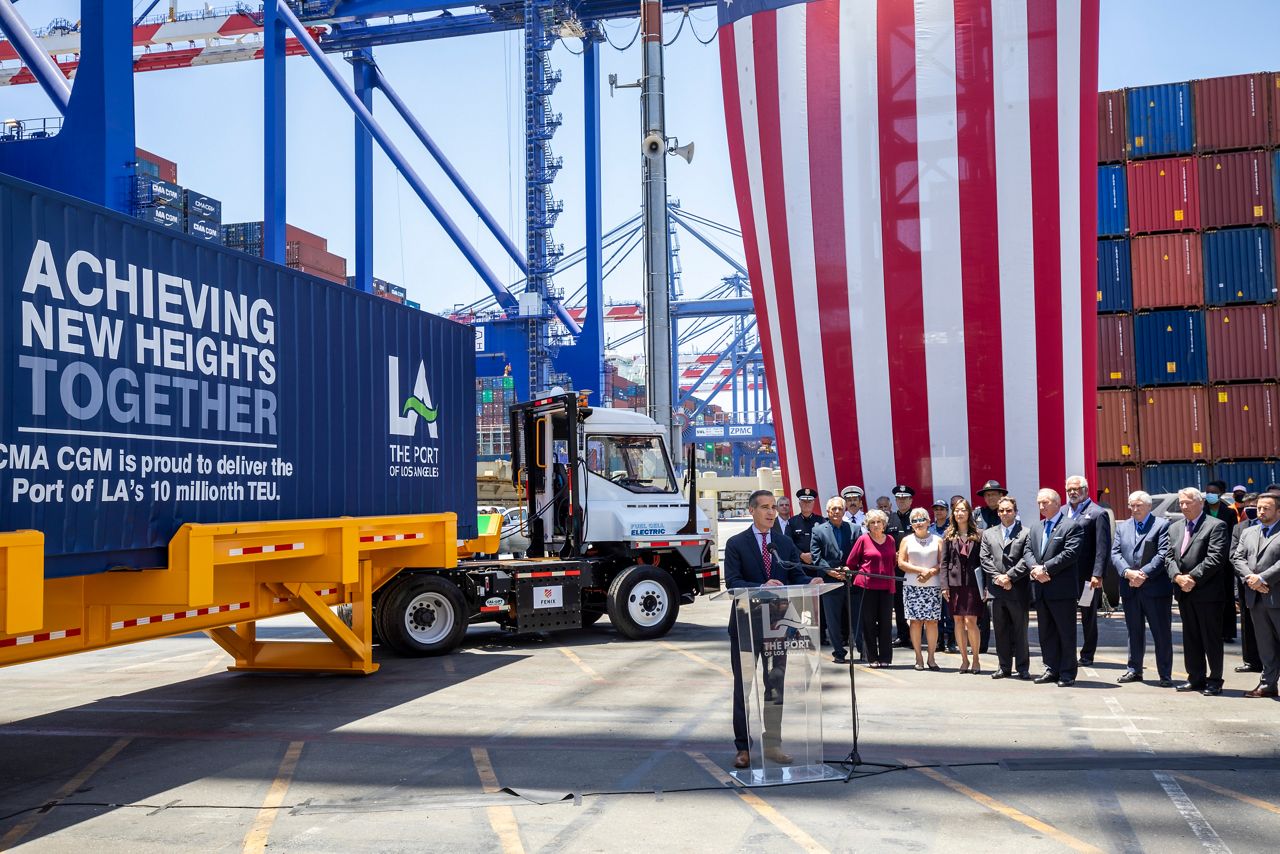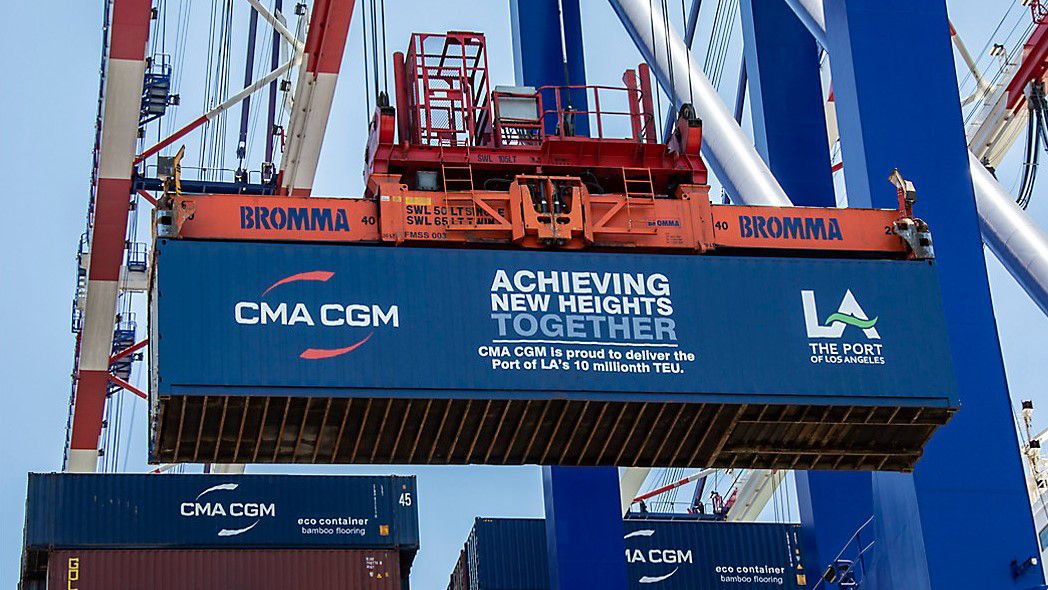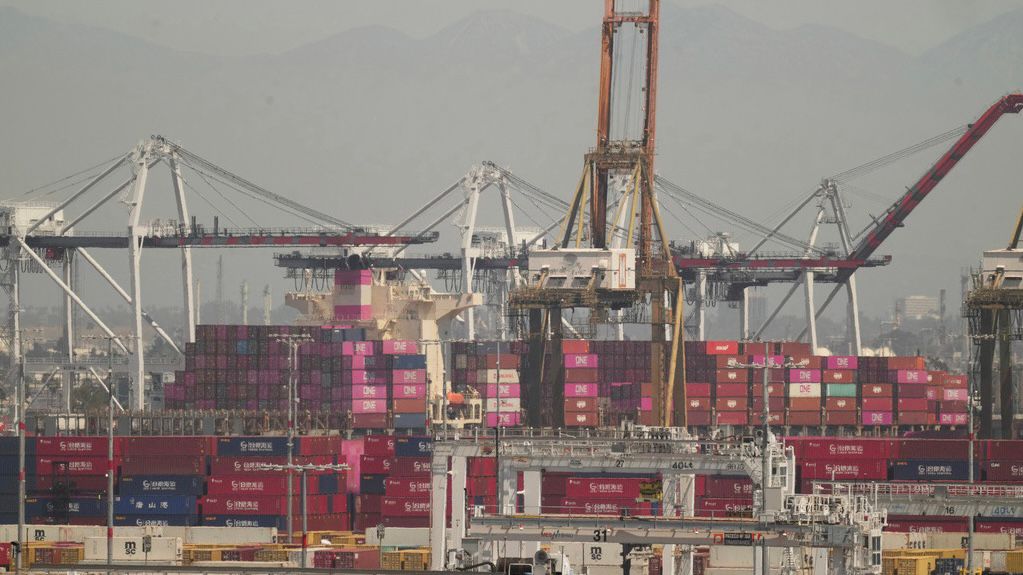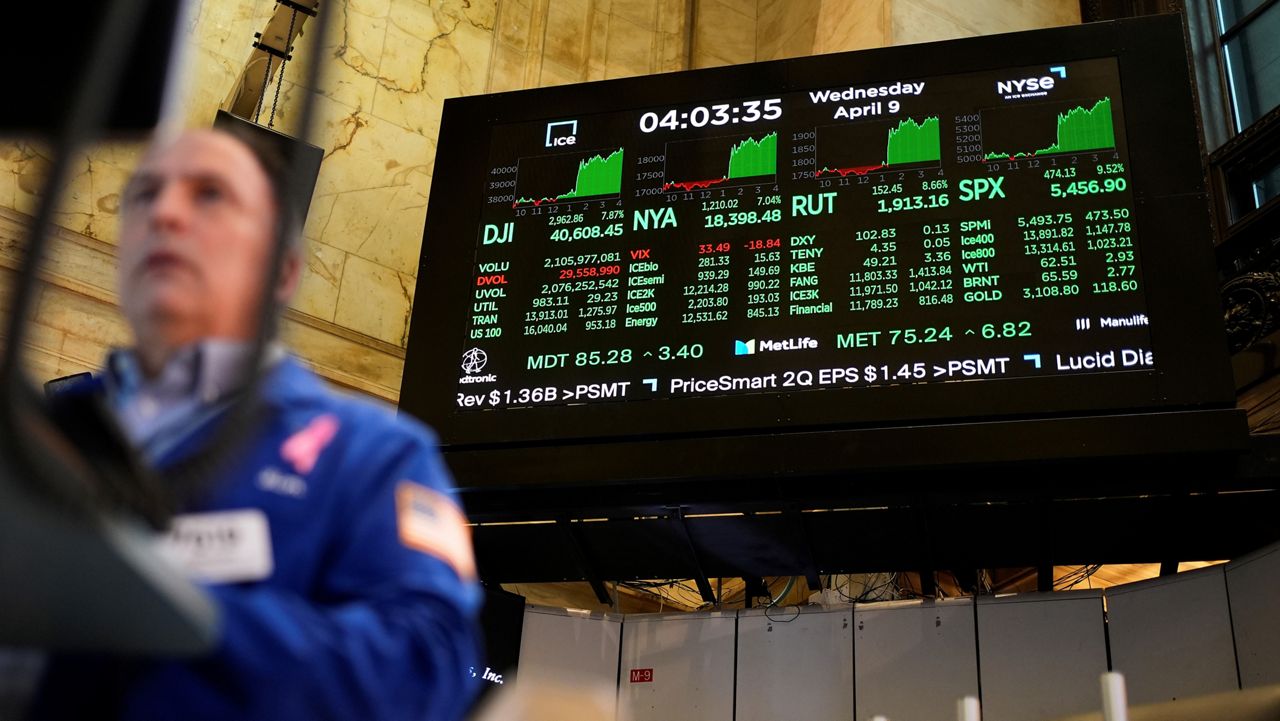LOS ANGELES — Anyone who's struggled to buy a refrigerator or tennis racket in recent months knows the culprit: supply shortages and backlogs at America's main shipping hubs. Now, the Port of Los Angeles has a jaw-dropping number backing that up. On Thursday, it became the first port in the Western Hemisphere to process 10 million shipping containers in a 12-month period.
It was such a momentous occasion that LA Mayor Eric Garcetti, LA Police Department Chief Michel Moore and LA Fire Department Chief Ralph Terrazas gathered in San Pedro to watch as a giant orange claw grabbed the record-breaking container off the back of a truck and loaded it onto a CMA CGM vessel at the Fenix Marine Services Container Terminal. Filled with soybeans from Illinois, they will soon be on their way to Asia.

"This box container we see here is significant. It's an appropriate time to shine a light on it," said Port of Los Angeles Executive Director Gene Seroka.
Seroka used the moment and the container's contents to call for a national export program to reconcile an ongoing trade imbalance between the U.S. and Asia.
Exports have dropped 27 out of the last 30 months at the Port of LA, Seroka said last month, with the import to export ratio growing to "the highest gap we've seen." In April, it was 4.3 to 1 compared with 4 to 1 in March.
As impressive as the 10 million milestone is for the port, it's a record that will soon be broken yet again. The port is expected to process 10.8 million containers by the end of June, setting "another record on top of this record for the Western Hemisphere," Garcetti said.
Those figures are largely possible because of the number of cargo ships working at the port, which have increased 50% during the pandemic, from 10 to 15 daily.










